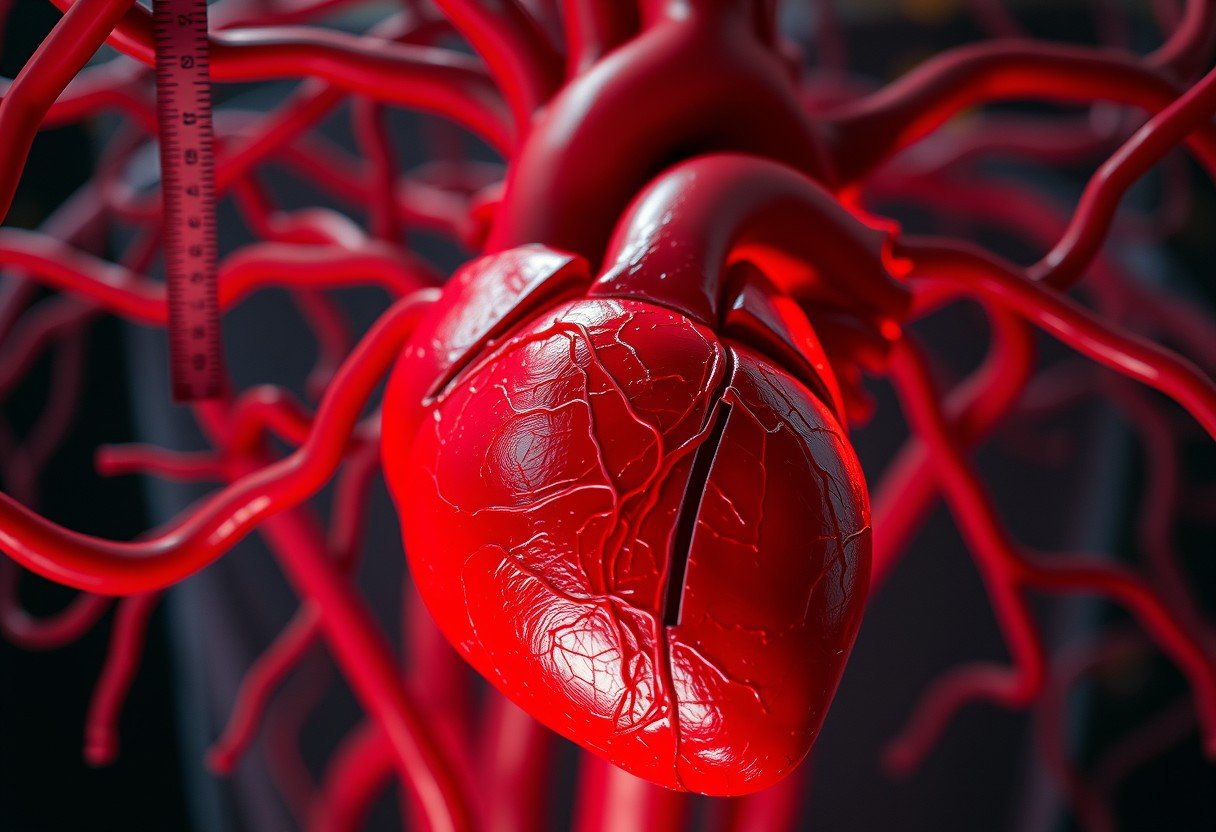Your circulatory system is a remarkable highway, and with every beat, your heart sends blood on a crucial journey. But how far does it actually go? In a single heartbeat, blood can travel anywhere from a few centimeters in smaller vessels to nearly a meter in your largest arteries. This distance is vital for delivering oxygen and nutrients throughout your body, keeping every cell alive and functioning.
The Heartbeat and the Start of the Journey
Your heart acts as a powerful, two-stage pump. Understanding its rhythm is the first step to understanding blood movement. The entire process is known as the cardiac cycle, which keeps blood flowing continuously.
Each heartbeat has two main phases. The first is systole, which is the contraction phase. During systole, your heart muscle squeezes, pushing blood out into your body’s main artery, the aorta. This creates the pressure that propels blood forward.
The second phase is diastole. This is when the heart muscle relaxes, allowing its chambers to refill with blood, preparing for the next beat. This cycle repeats about 60 to 100 times per minute when you are at rest, ensuring a constant supply of blood to all your tissues.
So, How Far Does a Drop of Blood Travel?
The distance blood moves in one beat isn’t a single number because your circulatory system has many different-sized “roads.” In the massive aorta, blood moves the fastest and can travel between 50 to 100 centimeters with a single powerful push from the heart.
However, the journey slows down dramatically as blood enters smaller vessels. By the time it reaches the tiny capillaries, which are responsible for delivering oxygen directly to your cells, it moves much more slowly. This slowdown is essential to give enough time for the exchange of nutrients and waste products. In these microscopic vessels, blood might only move a fraction of a centimeter per beat.
Key Factors that Influence Blood Movement
The exact distance blood travels during a heartbeat can change based on several important factors. Your body constantly adjusts these to meet its needs, whether you’re sleeping or running a marathon. Think of it like traffic flow in a city; sometimes it’s fast, and other times it’s slow.
Several key elements determine the efficiency and distance of blood flow:
- Vascular Resistance: Narrower or less flexible blood vessels create more resistance, which can slow down blood flow and reduce the distance it travels.
- Heart’s Contractility: A stronger heart muscle can pump blood with more force, increasing the stroke volume (the amount of blood pushed out per beat) and sending it further.
- Blood Viscosity: This refers to the thickness of your blood. Thicker blood flows more slowly, while thinner blood moves more easily through your vessels.
Your overall health, age, and fitness level also play a significant role. For example, regular exercise strengthens the heart, allowing it to pump more blood with each beat, which improves circulation efficiency.
How Exercise Supercharges Your Blood Flow
When you engage in physical activity, your body’s demand for oxygen skyrockets, especially in your muscles. Your cardiovascular system responds immediately by increasing both your heart rate and your stroke volume.
This enhanced blood flow delivers more oxygen and nutrients exactly where they are needed, helping you perform better and for longer. Regular exercise makes this process more efficient over time. It strengthens your heart muscle, which can lead to a lower resting heart rate because your heart can pump the same amount of blood with fewer beats. This reduces the overall strain on your cardiovascular system, promoting long-term health.
Blood Travel Distances in Humans vs. Other Animals
It’s fascinating to see how the distance blood travels per beat varies across the animal kingdom. The size of the animal and the demands of its body play a huge role in how its circulatory system is designed. Larger animals need more powerful hearts to pump blood over much greater distances.
This table shows a comparison of the approximate distance blood travels in the main arteries of different species during one heartbeat.
| Species | Distance Traveled per Beat (cm) |
| Human | 80-100 |
| Elephant | 150-200 |
| Mouse | 30-40 |
As you can see, an elephant’s massive heart needs to pump blood a much longer distance to reach the ends of its body compared to a human or a mouse. These differences highlight how circulatory systems are perfectly adapted to the unique physiology of each species.
Why This Measurement Matters for Your Health
Understanding the dynamics of blood flow is more than just a fun fact; it’s a critical indicator of cardiovascular health. When doctors measure blood flow, they can assess how well your heart is functioning and whether your blood vessels are clear and healthy.
Impaired blood flow can be a sign of serious health conditions. For instance, atherosclerosis, which is the buildup of plaque in the arteries, can narrow the vessels and reduce how far blood can travel. This can lead to high blood pressure, heart disease, or even a stroke. By monitoring blood flow, healthcare professionals can detect these problems early and recommend lifestyle changes or treatments to manage them effectively.
Frequently Asked Questions about Blood Circulation
Why does the distance blood travels in a beat vary so much?
The distance varies mainly because of the size of the blood vessel. Blood moves very quickly and covers a long distance in large arteries like the aorta, but it slows down significantly in tiny capillaries to allow for nutrient exchange.
How is the distance blood moves during a heartbeat measured?
Medical professionals use non-invasive imaging techniques like Doppler ultrasound or Magnetic Resonance Imaging (MRI). These tools allow them to visualize blood moving through vessels and calculate its speed and distance per heartbeat.
Does high blood pressure make blood travel further?
Yes, higher blood pressure means the heart is pumping with more force, which can propel blood further through the circulatory system. However, chronic high blood pressure puts a dangerous strain on your heart and artery walls.
Can I do anything to improve my blood circulation?
Absolutely. Regular physical activity, a balanced diet, staying hydrated, and avoiding smoking are all excellent ways to improve circulation. These habits help strengthen your heart and keep your blood vessels flexible and clear.








Leave a Comment